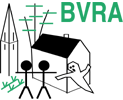In the seventeenth and eighteenth centuries, the largest farm in the parish was Barkham Farm (subsequently Church Farm, now Church Cottages) adjacent to the parish church.
By 1710 the tenancy of Barkham Farm was held by Peter Philp, who served as churchwarden in 1710-12. He and his wife Elizabeth occupied the farmhouse with their sons John and Philip and daughters Hannah and Hester. Peter Philp again served as churchwarden in 1717-18.
A unique insight into life at Barkham Farm at this time is provided by the probate inventory of Peter Philp, who died in 1724, and by his will, both of which survive at the Public Record Office.
Peter Philp was a wealthy farmer by contemporary standards, and when he died in 1724 his personal estate was valued at £1,135. 7s. 6d., a very large sum in those days.
Tudor, Stuart and early Georgian probate inventories can be a fascinating source of information, typically containing exhaustive lists of the deceased's possessions (even itemising cutlery) room by room and in outbuildings, thereby providing a picture of what it was like inside the house. Peter Philp's inventory was unusally long, being a narrow sheet of parchment 2 ft. 8½ in. in length.
The inventory reveals that on the upper floor of the farmhouse and adjacent outbuildings were the hall chamber (with one bed), the milk chamber (used for storing sheets etc.), the pantry chamber (one bed), the kitchen chamber (one bed), the brewhouse chamber (one bed) and the mealhouse chamber (with four beds).
On the ground floor the rooms and outbuildings comprised the hall, the kitchen, the old granary, the buttery, the pantry, the milkhouse, the old brewhouse and the new brewhouse. There was also an inner cellar and an outer cellar, although these were not in use at the time of the inventory except for the storage of a few drinking vessels.
Despite his wealth, most of which was tied up in livestock, crops and grain, the 1724 probate inventory (like the surviving 1559 probate inventory of a previous tenant, Richard Symes) reveals that Peter Philp was very much a working farmer, and there were few home comforts at Barkham Farm, although the values in the inventory indicate that his personal possessions were high quality.
The only furniture in the hall (i.e. living room) was two tables, a couch, one cupboard, twelve chairs (almost certainly wooden), andirons, a fire shovel, tongs and fender, one pair of stilliers, a looking glass and a very early alarm clock. As for table ware, there only appear to have been 12 pewter plates and 11 pewter dishes in the farmhouse. There was, however, a warming pan which would have hung by the fireplace in the kitchen.
Barkham Farm extended to over several hundred acres, straddling either side of Barkham Street. (Barkham Square had not yet been built). The probate inventory shows that it was a "mixed" farm. At the time of the inventory (30 December 1724) there were 106 acres under winter wheat and 13 acres of turnips for cattle feed. The livestock on the farm included 30 cow "beasts", 161 common sheep, 90 fatting sheep, 10 cart horses, 10 colts, 13 hogs (including four fatting hogs) and 24 pigs.
At his death, Peter Philp's barns were well filled with grain and other produce, including French wheat (10 loads), red beans (12 quarters), oats (40 quarters), 10 quarters of maslin (a mixture of wheat and rye), wheat (17 loads and 8 quarters), barley (45 quarters), hay (55 loads @ 18 cwt.) and clover hay (13 loads).
The inventory gives the impression of an efficiently run farm, making extensive use of up-to-date husbandry techniques to improve yields (including fertilisation with dung, ashes (80 loads in stock), chalk (70 loads) and lime).
The farm also boasted an impressive array of equipment, including 3 dung carts, 2 hogg hutches, 3 ploughs, 11 harrows, 2 drilling ploughs, a water cart, 1 tub of tar, 1 pitch kettle, 8 milk cisterns, 3 cheese presses and 2 malt mills.
Most of the activities at Barkham Farm seem to have been relatively large scale, as reflected in the probate inventory by:
- 3 cwt. (336 pounds) of cheese;
- 28 lb. of honey;
- 24 lb. of tallow (for candles and soap);
- 24 dozen bottles (presumably empty);
- 11 flitches of bacon and two hogs in salt (valued at £17).
Whilst both the water from the well behind the farm house and the milk from the dairy herd would have been of questionable drinking quality, the farm was well equipped to brew its own beer. Apart from a new brewhouse, the inventory lists 5 quarters of malt, 120 pounds of hops and hop poles worth £5. 10s. It seems probable that there was an orchard and that cider was produced, since there was an apple range, an apple mill and 10 bushels of apples.
In his will Peter Philp specifically gave his wife Elizabeth the use of "one ffeather Bed Bolfter and one Pillow Rug and two Blankets One pair of Curtains and Vallence Bedsted and two pair of my beft sheets One boyling pot two pewter difhes Six pewter plates One ffire shovell Tongs and doggs and four of my beft Chairs".
The lease of Barkham Farm passed under Peter Philp's will to his son John, who served as churchwarden in 1728-29 and 1737-1740. The parish registers record the baptism of Sarah, daughter of John and Ann "Phelps", in 1730. Although two generations of the Philp family lived in Barkham from about 1710 to 1730, this is the only family entry in the parish registers and no other records survive about the contribution of the Philps to the life of the parish.
©David French
